Cobb SHC. Minimalist Yet Functional.
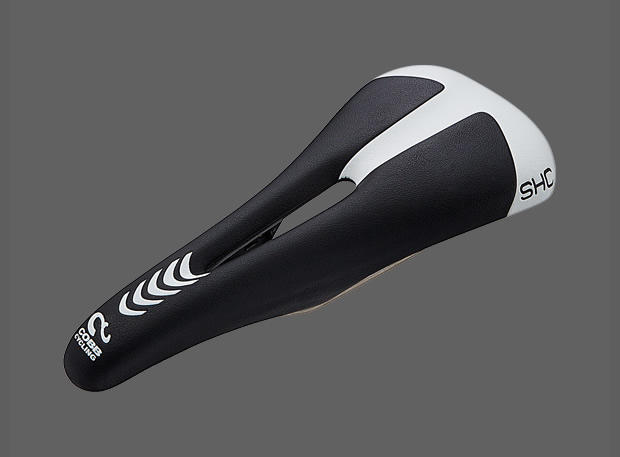
In mid-2009, John Cobb gave me one of the first versions of the HC170 (as in 170g and HC as in hard core, because it has basically no padding) road bike saddle at a FIST workshop. The HC170 has virtually no padding but as a highly flexible plastic shell that makes it light and surprisingly comfortable. The first ride I took it on was a four hour ride on my road bike, and I instantly knew it was the best road saddle I'd ever used. The cutout was small and unobtrusive but enormously comfortable, something I'd never found before. Saddles with cutouts had always chafed me, but not the HC170. Since then, apart from some brief and torrid love affairs with other saddles, this has been the default saddle on my road bike. Cobb no longer makes this saddle, but I have a stash that I can rely on for the foreseeable future. However, I've discovered a new mistress that may render that point moot…
Through the rest of 2009, John developed the SHC170 – now just known as the SHC because it's a bit heavier than 170g, though not much at 202g, a more heavily padded version of the HC170 designed to be ridden in the aero position, and showed me a version of that saddle sometime in the spring of 2010. The exact dates on this may be a bit fuzzy, and I will beg forgiveness here. I've ridden a lot of miles since then! I'd had success on the HC170, but I did not want to switch saddles on my tri bike mid-season. So the SHC prototype went into a bin in my garage and remained forgotten.
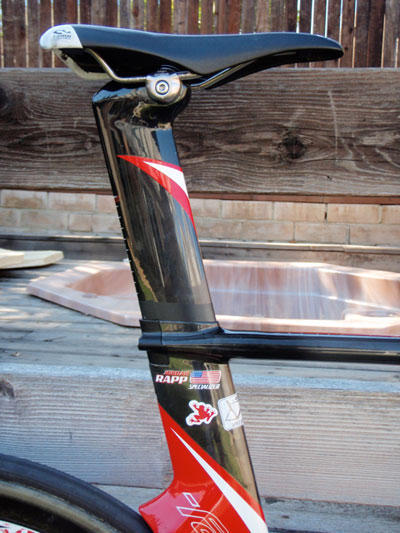
But then I ran into the side of a car, shattered a window, almost died, and threw my body pretty out of whack. For a long time, I thought that the shower of glass shards from the broken window had cut me "down there," in the way that they had cut me up in many other places. But now I'm less sure. Looking back over the course of the specific rehab I did, I think what happened is that it took a long time before I actually sat on the saddle straight. And since, on a tri bike, you can't rotate a saddle left or right, I got wicked saddle sores when I first got back on my bike and returned to using the saddle I had before my accident.
I was finally back on a bike, but I couldn't ride. It was devastating. The saddle was like a razor on my… well… 'tain't this and 'tain't that… So I started going through my bin of saddles. And I came across the SHC prototype. Like the HC170 and several other Cobb models, the SHC has extremely deep thigh glides. Rather than the shell ending at the edge, it wraps down into a deep "V." This contoured upper shell and the deep thigh glides (so called because your thighs glide over them) ended up being my saving grace.
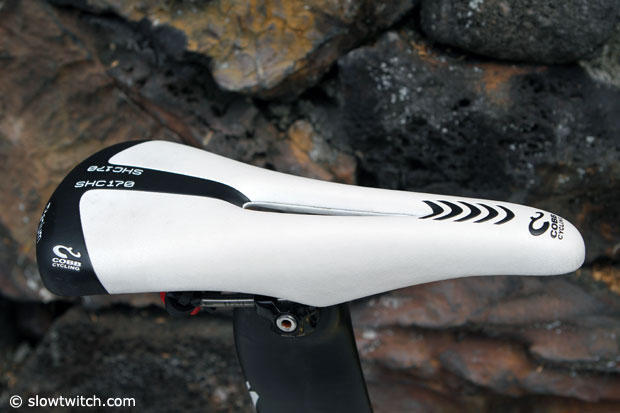
For road bikes, where your legs primarily move up/down, I think thigh glides are not critical. But for tri bikes, where your legs move more forward/back because of the steep seat angle, I think that thigh glides are more likely to be necessary. Now, not every saddle shape needs them. But, especially if you have very narrow hips and struggle to find a saddle that is narrow enough, thigh glides can make a huge difference. And, especially if you are sitting wonky on a saddle, as I was, and you can't rotate it, as is the case with virtually all tri bikes thanks to aero seat posts, then thigh glides are mandatory.
Interestingly, even companies that typically eschew thigh glides sometimes incorporate them onto their tri-specific saddles, as Specialized does with their Sitero model; Fizik's new Mistica saddle also features relatively deep thigh glides as well.
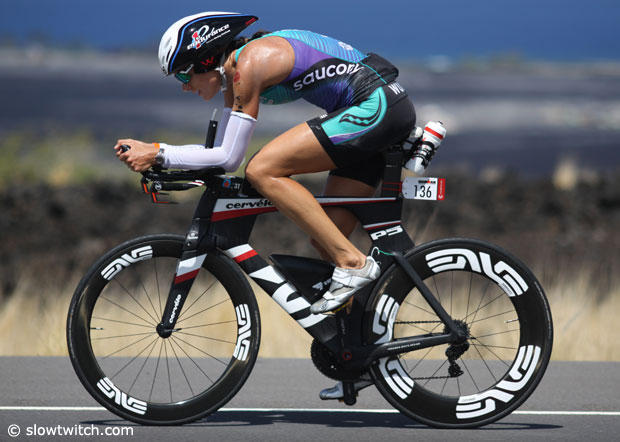
Intuitively, I had some idea of what I was looking for. I needed something that didn't have an "edge" where I was getting saddle sores. And the SHC seem a viable solution. The first ride was a revelation. And so began a long, long relationship with this saddle.
It wasn't always smooth though. The prototype saddle that I had was a "normal" HC170 shell with added padding. And the width of the HC170 is extremely minimal, especially at the nose. For the first production run of the SHC, John extended the thigh glides all the way to the nose of the saddle. Rather than having a minimalistic "beak," the production saddle had a rounded nose. The problem – for me – came when the factory then wrapped that nose in foam. The production SHC was wider by quite a bit than my prototype.
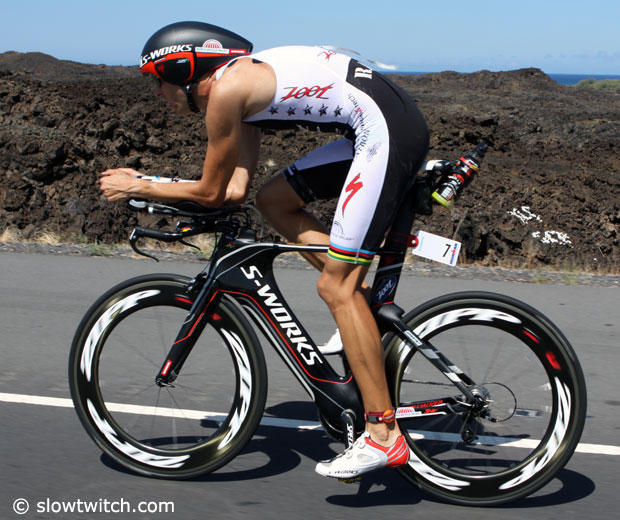
So I kept riding that prototype. Unfortunately, modern saddles are not designed to last. Intentionally. Because they also aren't designed to need to be broken in. The price for immediate comfort is a lack of durability. So my prototype SHC was sagging mightily by the time John finally got me to give it up with the assurance that he'd had the factory keep the padding on the top of the saddle and trim it from the sides so as to return the SHC to it's former narrowness.
Since that change was made, the saddle has remained largely unchanged. Cobb made a large switch in late 2014 for all saddles from solid titanium to hollow steel rails, but that did not affect the fundamental construction of the saddle. He added kevlar backing to the rear of some saddles to create the SHC DRT, my preferred mountain-bike saddle.
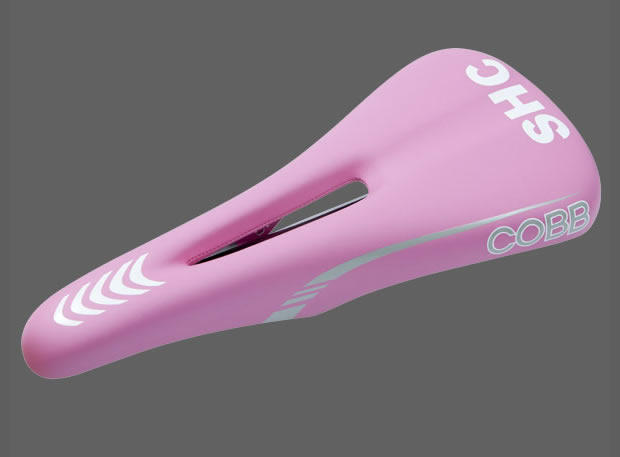
It comes in black and white or pink, and is about as plain and simple a saddle as I can imagine. In my experience, the shells are good for about two years of my riding – call it roughly 10,000mi – before they start to go concave front-to-back.
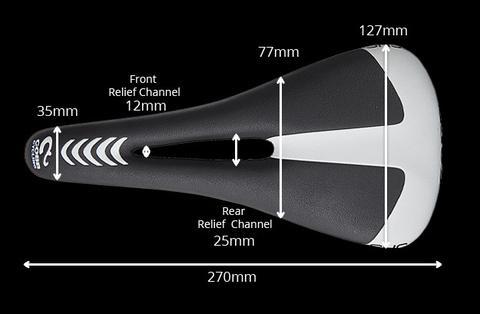
It's extremely narrow, especially at the nose, with a width of only 35mm (this is extraordinarily narrow) at the front. And even at the back, it peaks out at 127mm, again, super narrow.
Unfortunately, it has no options for integrated bottle carrying or storage, but the durable Cro-Moly steel rails gladly accept any number of clamping systems without worry.
It's definitely not the first choice for most riders during a bike fit. And most of the riders I know who like it are relatively light and relatively strong, meaning that they have relatively little weight on their saddles when they race; it's disproportionately popular among pro athletes. But, almost without exception, they all praise the same thing – the narrowness (far above all else, this is why people ride this saddle), the forgiving flex of the whole saddle thanks to its plastic shell, and the perfectly flat contour front to back, which allows you to make use of the whole saddle.
For people who struggle to not feel like they are "falling into space" with a noseless saddle, the narrowness of the SHC allows you to have a "stop" on your pelvic rotation, something which is neither good nor bad, but just is. For me, this was a necessary feature. I could never put out the power I needed on noseless saddles, because I felt totally unsupported. But with the SHC, I could push against the saddle. While I would not say it was a revelation in comfort, I also would say that is generally true of tri bikes. Tri bikes are race bikes. They are meant to be comfortable within the context of doing something inherently uncomfortable. Or, as a friend of mine says, "tri bikes are instruments of foreign policy…"
For me, the SHC was comfortable primarily because it was functional. And I mean that as high praise. It was a saddle that allowed me to ride the way I needed to ride. It's not the most comfortable saddle to ride. But, without question, it was the most comfortable saddle to race for many years, and remains a fantastic choice.
If you are looking for a traditional saddle that's simple, narrow, and flat, the SHC should be at the top of your list.
[Disclosure: I had a business relationship with Cobb Cycling from 2010-2013. I received and continue to receive saddles from Cobb free of charge. I was not compensated by Cobb for writing this review.]


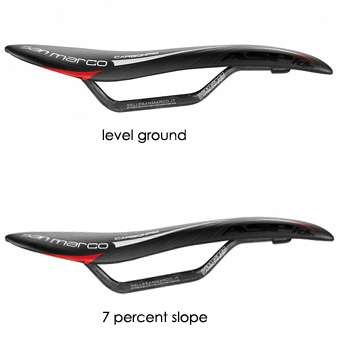
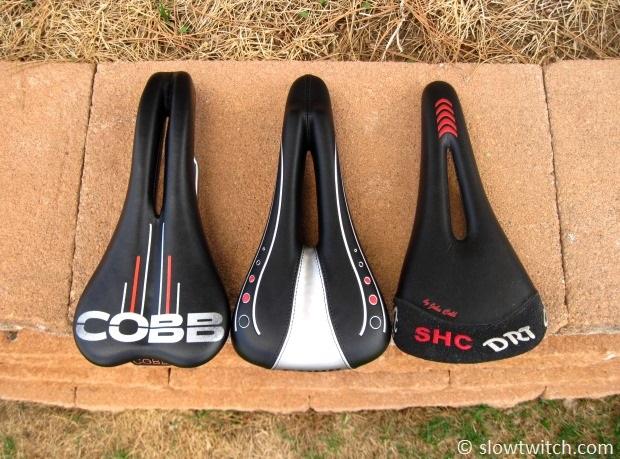
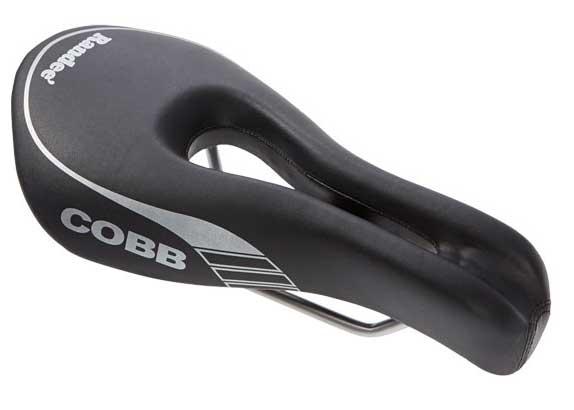
Start the discussion at slowtwitch.northend.network